The elusive mirage of level playing field
Fairness in electoral races often sacrificed at the altar of power dynamics
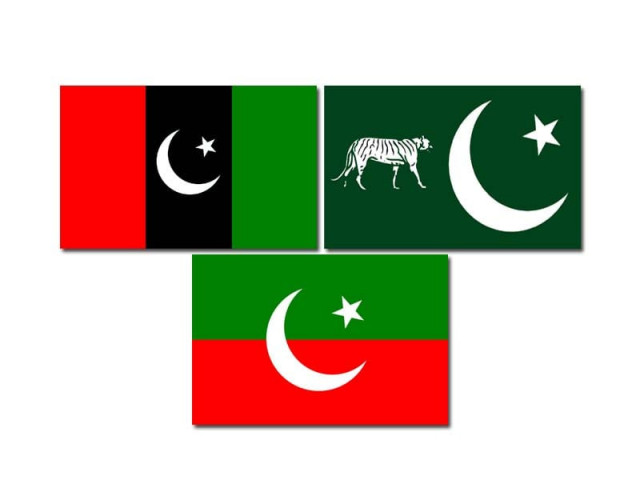
As Pakistan gears up for its 12th general elections, the dream of a "level playing field" remains an elusive mirage. The historical pendulum of victimisation and strategic manoeuvring continues to shape electoral outcomes, leaving voters to grapple with the complexities of a political landscape where fairness is often sacrificed at the altar of power dynamics.
In the intricate dance of power dynamics, the hurdles faced by PTI shed light on a historical pattern of political victimisation and strategic manoeuvring.
In the wake of the events on May 9, where PTI supporters face allegations of breaching military installations, the party is confronted with unparalleled difficulties.
Prominent figures such as Imran Khan, Shah Mehmood Qureshi, and Pervaiz Ellahi now reside behind bars. Several influential members are either in hiding or are barred from participating in elections.
The PTI, having been stripped of its electoral symbol ‘Bat,’ now sees its candidates running independently. More than 50 per cent of these candidates are newcomers, a result of widespread defections from the party.
In the absence of the freedom to campaign publicly or on mainstream media, PTI candidates have turned to social media, attempting to navigate an increasingly challenging political landscape. Imran Khan and Shah Mehmood Qureshi were served 10 years in imprisonment on Tuesday under the Official Secrets Act in the cypher case, just days before the polls.
As if this were not sufficient, an accountability court on Wednesday delivered another blow by sentencing Imran Khan and his wife Bushra Bibi to 14 years in a state gift case, dealing a final blow to the hopes of voters and supporters.
This situation raises questions about the concept of a "level playing field" in Pakistan's political history. PTI's predominantly young, middle-class supporters argue that their party is undergoing the worst victimisation in the nation's history, claiming that no other party has faced such adversity. The claims are partially true.
A closer examination of Pakistan's political past reveals a recurrent theme of victimisation, with one party's misfortune often becoming another's patronage. The ebb and flow of power dynamics have seen roles reversed within a short span, with political parties, instead of learning lessons, aligning with powerful establishment to push their opponents into electoral oblivion.
Let's delve into a brief history of instances where the elusive "level playing field" was conspicuously absent in every election the country had:
PTI's Rise to Power (2018)
PTI emerged as the choice of powerful quarters, displacing PML-N from favour. Nawaz Sharif faced disqualification and conviction on corruption charges after the Panamagate scandal, paving the way for PTI's ascendancy.
Soon after he came to power in 2013, Nawaz Sharif lost the support of the establishment and was disqualified from office by the Supreme Court and was convicted on corruption charges as a result of Panamagate leaks that highlighted that hundreds of Pakistanis including the Sharif family had parked their money in offshore accounts.
Both the disqualification and conviction have now been overturned by the Supreme Court making elder Sharif a frontrunner for the covet office for the historic fourth time.
The PML-N government was paralysed by Imran Khan and Tahirul Qadri’s protests in 2014 and by TLP in 2017. The most lethal was TLP’s month-long sit-in at Faizabad, one of the main junctions that links the capital Islamabad with other cities.
The sit-in was organised to protest against purported changes in the oath of the members of parliament regarding the finality of the Prophet (Peace Be Upon Him) which TLP claimed was an act tantamount to blasphemy.
Meanwhile, the TLP entered the electoral arena brandishing a hardline religious stance, clinching the fourth-largest vote share in Punjab, the province which decides the fate of elections due to its population size and corresponding number of seats in the National Assembly.
Many electables either switched to other parties, mainly to PTI, or they returned the party ticket and contested as independents and later joined Imran’s party.
Leading up to the 2018 elections, PML-N experienced setbacks in votes, and reputation, and even witnessed attempts on the lives of key leaders. Its law minister Zahid Hamid resigned from the federal cabinet due to pressure from TLP, while Ahsan Iqbal faced an assassination attempt. Nawaz Sharif encountered a shoe being thrown at him during a public function.
Religious decrees against the party were issued, discouraging voters from supporting PML-N. Evidently, this created an uneven playing field for PML-N, leaving the path open for PTI.
PPP's challenges (2013)
In 2013, PML-N assumed power following general elections in which PPP and smaller parties like ANP confronted serious threats from terrorists, hampering their ability to conduct election campaigns freely.
During its 2008-13 term in government, Salman Taseer, PPP’s governor in Punjab, was assassinated by his own official bodyguard in 2011. The assassin claimed the governor was trying to secure the release of a Christian woman who was in jail on blasphemy charges. This action according to the assassin was an act of blasphemy.
Unknown assailants took the life of Shahbaz Bhatti, a Christian member of the PPP cabinet, seemingly in response to his firm stance on blasphemy-related issues. Meanwhile, Hamid Saeed Kazmi, another cabinet member, narrowly escaped an assassination attempt.
To avoid potential backlash from extremist elements, several sitting PPP ministers, including Sherry Rehman, had to go underground. Their efforts aimed at amending legislation to discourage the misuse of blasphemy laws had drawn ire from those opposing the changes.
Election rallies of PPP and ANP were attacked by the terrorists lost a key leader and many workers in one such attack on an election corner meeting in Peshawar.
Such circumstances tilted the playing field in favour of PML-N and PTI, pushing PPP out from Punjab and KPK.
PPP at the cost of PML-Q 2008
PPP won the 2008 elections amid the tragic assassination of Benazir Bhutto which engendered a sympathy vote for the party and the declining rule of General Pervez Musharraf as PML-Q was not the first choice of powerful quarters this time.
Besides other factors including inside tussle with powerful quarters, sudden power and gas outrages started in the country just before the election and PML-Q claimed that this was done to curtail the party's vote bank.
PML-Q leadership claimed their party was made to lose the election despite its good performance during the 2002-07 term.
PML-Q's Ascendency (2002)
In 2002, PML-Q assumed power with the support of the establishment, having been established by General Pervez Musharraf through the fragmentation of PML-N. The top leadership of both PML-N and PPP resided in exile, and numerous prominent figures faced corruption charges, which could be absolved if they pledged allegiance to the military ruler.
Despite unfair tactics, PPP and PML-N, though receiving a good number of votes, faced a significant discrepancy in the number of seats secured.
Read: Political parties urged to show economic manifestos
While both PML-Q and PPP secured 26 per cent of the votes, PML-Q emerged as the leader with 78 seats compared to PPP's 63. In contrast, PML-N, despite having 12 per cent of the votes, only managed to secure 15 seats. Additionally, other pro-establishment groups like the National Alliance, with five per cent of the votes, garnered 13 NA seats, and Muttahidda Majlis e Amal (MMA), with 11 per cent of the votes, secured 45 general seats.
Clearly, the electoral field was not favouring both PPP and PML-N at that time.
Embarking on a journey through Pakistan's electoral history's early years, one encounters twists, turns, and recurring themes of political manoeuvring throughout its chequered history.
1956: The Inception of Constitutional Experimentation
Nine years post-independence, Pakistan witnessed the adoption of its first constitution, establishing a parliamentary form of government with executive powers vested in the prime minister. The president, the head of the state, was to be elected by members of the National and provincial assemblies.
Despite East Pakistan's demographic majority, the National Assembly's representation allocated half the seats to the province, sparking claims of underrepresentation.
However, the constitutional journey faced a detour as the first general elections slated for February 1959 were pre-empted by a coup d'état in October 1958. General Ayub Khan seized power, ushering in his own constitution and a shift to a presidential form of government. The subsequent elections in 1964 bore witness to rampant rigging, securing Ayub's continued rule.
1970-1977: Electoral Turmoil and Manipulations
The year 1970 marked the first general elections under martial law, introducing universal adult franchise. Awami League, the popular party of East Pakistan, faced adversity from powerful quarters from West Pakistan. The elections of December 1970, held under the second martial law, were marred by allegations of suppression. Awami League Chief Sheikh Mujeebur Rahman was behind bars on sedition charges.
In 1977, the founder of the PPP, Zulfikar Ali Bhutto, advanced the elections almost a year ahead of schedule. The opposition parties claimed delimitations favoured PPP, and state resources were exploited for electoral gains. The elections, characterised by large-scale manipulations, left even Bhutto astonished at the results.
Chief Election Commissioner Justice Sajjad Ahmed acknowledged widespread manipulations, denying a level playing field to opposition parties.
1985: Non-Party Based Elections Under Military Rule
During General Zia-ul-Haq's military rule, the 1985 elections took a different course, being non-party-based. The PPP boycotted the polls, citing mistrust in the process, and the political landscape grappled with unique dynamics under military oversight.
1988: The Demise of Zia and the Birth of IJI
The 1988 elections, following the death of General Zia-ul-Haq, witnessed the formation of the nine-party alliance named IJI to counter Benazir Bhutto's PPP. Propaganda campaigns and last-minute changes, such as the mandatory national identity card for voting, were aimed to favour IJI. PPP secured 93 seats against IJI's 54, highlighting a shift in political dynamics.
1990s: A Decade of Shifting Alliances and Power Dynamics
After then President Ghulam Ishaq Khan dismissed Benazir Bhutto’s nascent government in August 1990, he appointed Ghulam Mustafa Jatoi who was head of IJI in 1988 elections as caretaker prime minister.
In Sindh, the stronghold of PPP, Jam Saddiq, another known anti-PPP politician was appointed as caretaker chief minister.
Meanwhile, millions of rupees were doled out from the national exchequer to favour component parties of former IJI. This was proven in the Supreme Court in the Asghar Khan case. The decision came in 2012 decades after what was done back in 1990 to deny the PPP a level playing field. The PML-N-led alliance secured 105 seats against Benazir Bhutto-led Pakistan Democratic Alliance’s 45.
Within three years the roles were changed again. Nawaz and Ishaq Khan who was a representative of the establishment fell out on the issue of the appointment of a new army chief after the sudden demise of General Asif Nawaz due to heart attack.
Benazir Bhutto joined hands with the establishment and sent Nawaz packing in 1993. Her husband who was in jail on corruption charges, became part of the interim cabinet. PML-N which was contesting previous elections on the symbol “Bicycle” was denied its election symbol and was allotted a tiger as the new symbol.
Then popular PML-N lost the election bagging 56 general seats against PPP’s 65.
The Benazir Bhutto-led PPP government did not last long either. Bhutto’s confidant President Farooq Leghari dismissed her government in November 1996.
Benazir Bhutto, along with her husband Asif Ali Zardari and numerous other prominent members of their party, confronted corruption charges.
Rather than concentrating on election matters, they found themselves entangled in legal battles, striving to evade potential convictions under recently introduced accountability laws, which appeared to be selectively wielded against those out of favour with powerful entities at that time.
The establishment’s favourite PML-N returned successfully in the February 1997 elections bagging a “heavy mandate” of 137 general seats against PPP’s 18, out of 203 directly elected seats for the National Assembly.
PPP alleged PML-N of worst victimization. Benazir went on self-exile while Zardair was incarcerated on corruption charges.
1999: The Fateful Military Coup and PML-Q's Emergence
Not a year had passed when PML-N developed differences with powerful quarters. On November 28, 1997 PML-N supporters stormed the Supreme Court building to avoid possible contempt of court. This heavy-mandate government of Nawaz Sharif was sacked in October 1999 in a military coup when Sharif attempted to replace army chief General Perez Musharraf and appointed General Zia Uddin Butt as the new army chief.
Nawaz Sharif and many others faced imprisonment, only to be released when they signed a covenant with the establishment not to return to Pakistan for the next ten years. A new party PML-Q was created breaking PML-N into pieces which contested the 2002 polls as the king's party.
As Pakistan navigates the intricate tapestry of its electoral history, the recurring theme of shifting alliances, power struggles, and accusations of manipulation continues to shape the nation's democratic narrative. The complexities of the past echo in the present, leaving citizens to ponder the elusive pursuit of a truly "level playing field" in their political journey.

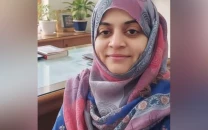
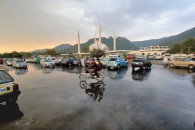
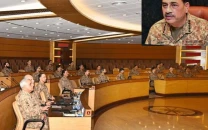
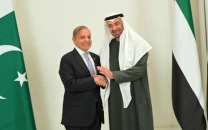


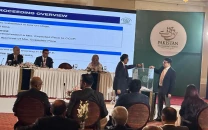
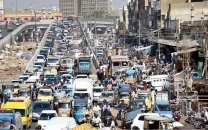
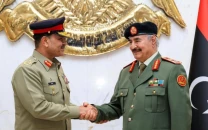

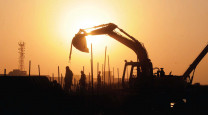
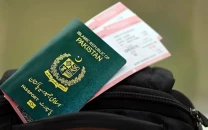

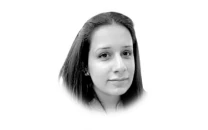




COMMENTS
Comments are moderated and generally will be posted if they are on-topic and not abusive.
For more information, please see our Comments FAQ